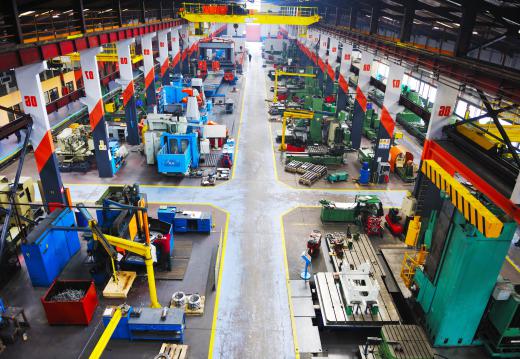Conveyor systems are present in all sorts of industrial settings, from warehouses to factories and even on construction sites. While these systems are exceptionally convenient and efficient, they can also be dangerous, so conveyor safety must be a top priority for all workers surrounding the machinery. Whenever possible, employees should undergo conveyor safety training so everyone near the machinery understands the risks, procedures, and emergency shut-down options of the system. All operators should receive additional training on efficient and safe use of the machine as well as basic maintenance.
One of the most important conveyor safety tips is to avoid allowing people to sit, stand, or otherwise rest on the conveyor at any time. These systems are designed to haul materials and items, not humans in most cases; clothing and limbs can get caught in the conveyor system, potentially leading to injury or death, as well as damage to the machine itself. Loose clothing should not be worn around the machine at any time, and long hair should be tied back. Many companies require hard hats and eye protection to be worn as part of the conveyor safety procedures as well.

Proper positioning while using the conveyor system is also important. This means workers should avoid standing in areas where they are likely to get hit by objects being transported on the conveyor. Some conveyor safety features are built into the machine; retarders are metal slides between sections of rollers that will slow down objects as they move along a conveyor system. If the conveyor is a non-powered system that relies on gravity to move the objects, retarders should be strategically placed within the system to slow objects down and protect workers from rapidly moving objects. Workers should ensure they can see items coming along the conveyor system at all times; if this is not possible, warning systems such as alarms should be installed.

One of the most common risks to safety on a conveyor system occurs during maintenance or repair procedures. To ensure conveyor safety, the entire system should be shut down completely, and if possible, disconnected from power sources, before any maintenance is performed. Only trained professionals should work on conveyor systems, as the risk for injury still exists even if the entire system is powered down. No items or materials should be left on the conveyor system while it is being repaired or maintained, as this leaves open the risk that items can move along the conveyor unintentionally.
